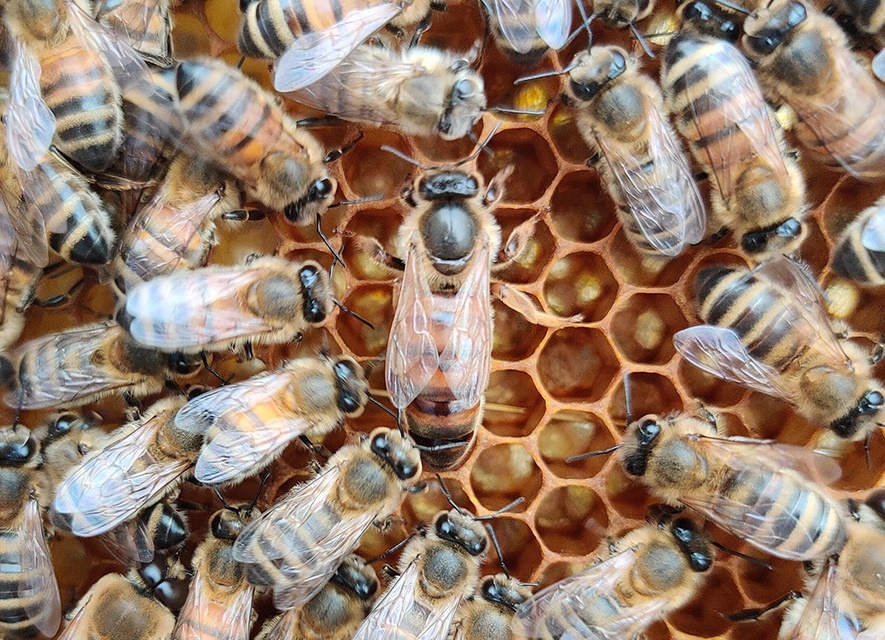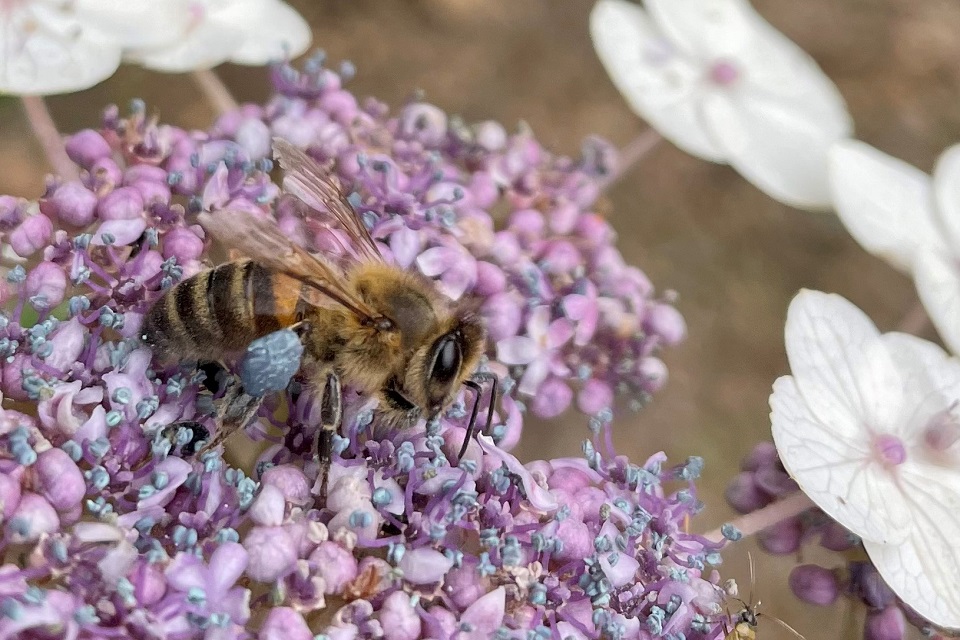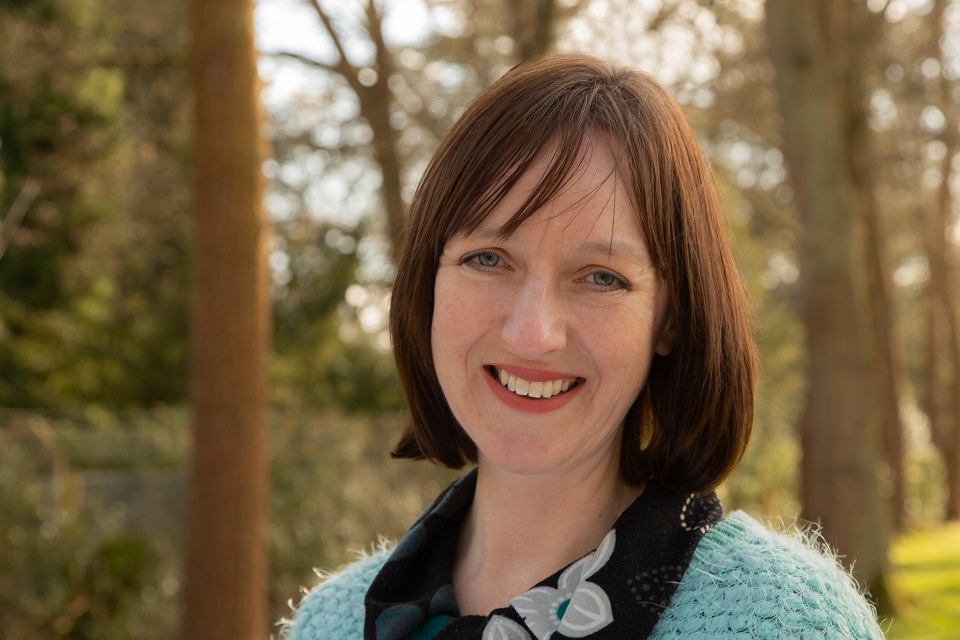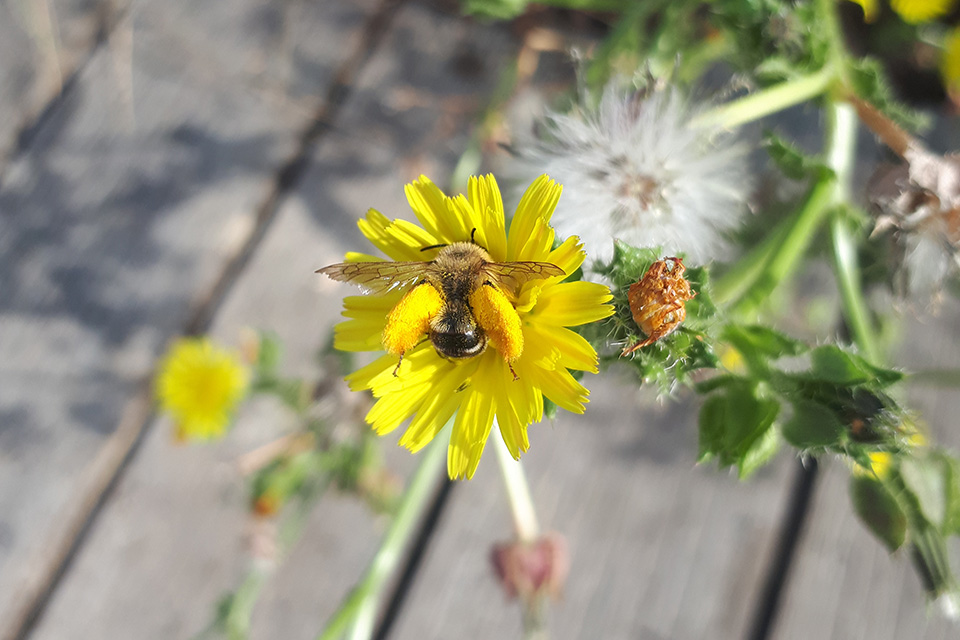October in the Bee Garden
Find out how we will know whether pollinators are visiting the Bee Garden, discover why bees need pollen, plus your chance to ask RHS Wildlife Expert Helen Bostock everything you have always wanted to know about bees and pollen.
07 October 2022

Honeybees inside their nest
Tracking visiting pollinators in the St George's Bee Garden

To help us to understand how many pollinators are visiting the garden at St George’s Church of England Primary School in London, a POLLY device has been installed ready to count them. This device listens for the sounds made by bumblebees, honeybees and hoverflies and records any that visit. It also measures the temperature, humidity and amount of light, so we will be able to see how these affect the number of pollinators that visit the garden.
What do you think: will more bees and hoverflies visit the garden during the daytime or in the dark, on dry days or wet days, when it is warm or when it is cold? We are looking forward to finding out!
You can listen out for some visiting pollinator species - when bees fly, they beat their wings very quickly and this makes the buzzing sound that we can hear.
Image credit: Pascale Vassie, St George's Church of England Primary School
Why do bees need pollen?
Explore the meaning behind the bolded words in our glossary at the bottom of the page.
Pollen sticks onto bees when they visit a flower and brushes off when they visit another flower, this helps the plant by pollinating it so that it can produce seeds or fruit to grow new plants. But female bees also collect pollen on purpose, gathering it to eat and to feed to their young (known as larvae) as it is a good source of protein and other essential nutrients needed for them to grow.
Different flowers have different types of pollen and nectar. Some types of bee collect from just one or two types of flower. But the majority of bees need to visit many species of plant so that they can get all the nutrients from the flowers that they and their young need.

Female bees use a variety of different ways to carry pollen back to their nests. Honeybees and bumblebees have pollen ‘baskets’ on their hind legs, a shiny shallow dish-like area which can hold onto a ball of pollen. The pollen in these baskets can be different colours depending on which flowers they have been collecting from; white, yellow, orange, pink or even blue, as you can see on in the photo on the right. Some solitary bees have a 'pollen brush' called a scopa, made up of a mass of long hairs on the underside or hind legs.
When taken back to the nest the pollen is often made into a ball and placed in the cell next to the egg, so that the larvae have a food source when they hatch.
To discover what a pollinator is, how they support our gardens and why pollen is so important to plants please follow the link to our ‘September in the Bee Garden’ entry.
Honeybee image credit: Helen Bostock
Take part: Send us your pollinator questions


RHS Wildlife Expert Helen Bostock
Pantaloon bee image credit: Helen Bensted-Smith
This month we would love you to send us your questions about bees and pollen, for example you might want to know why the bee in the photograph above is called a pantaloon bee. RHS Wildlife Expert Helen Bostock will be answering some of your questions in a video which we will be posting next month in our 'November in the Bee Garden' entry.
Submit your questions to us using our survey, or send us a direct message on Facebook, Instagram or Twitter.
The deadline to send in your questions is 21 October 2022.
Submit your questions
Glossary
|
Humidity |
How much water vapour is in the air. |
|
Larva (larvae is plural) |
The active immature stage of an insect, usually referring to those insects that go through a pupal stage where the larva looks very different to the adult. |
|
Nutrients |
Substances that organisms need to survive that they cannot make for themselves, e.g. vitamins and minerals. |
|
Organism |
A living thing. |
|
Pollen |
Dust like grains, produced by the male parts of flowers. Pollen in the air is what causes some people to have hayfever. |
|
Pollinator |
Animals that move pollen from one flower or plant to another e.g. bees |
|
Pollinating |
When pollen is in the process of being moved from one flower or plant to another. |
|
Protein |
Made up of amino acids that are needed by all animals to keep them healthy. |
|
Scopa |
Mass of long hairs on the underside or hind legs of some bees, used for collecting pollen. |
|
Species |
Organisms that have similar characteristics to each other and closely enough related that they can successfully breed with each other. |